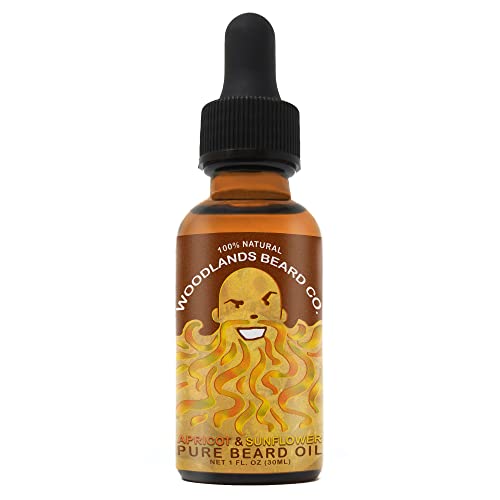
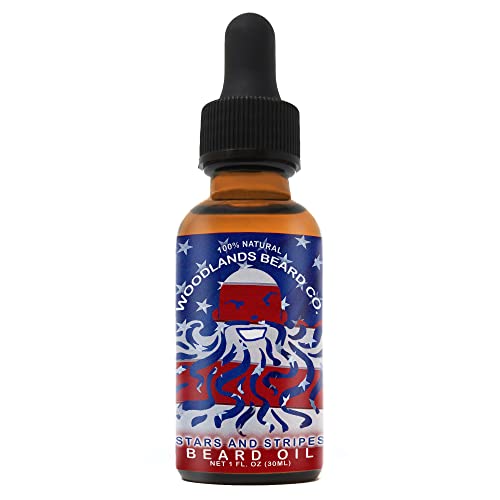
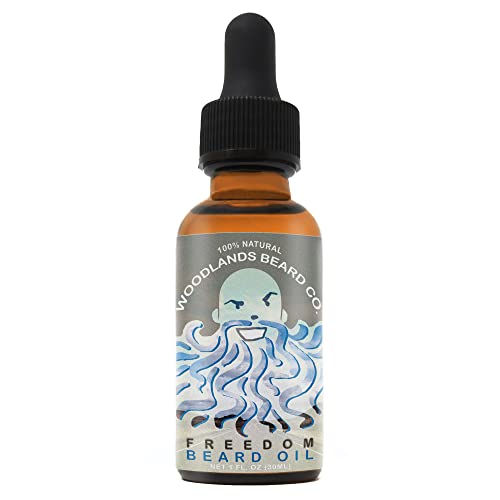
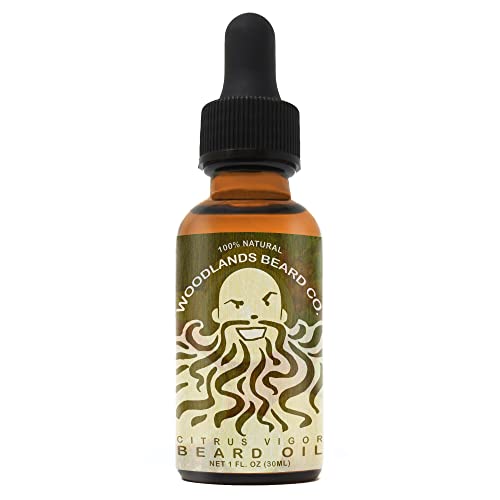
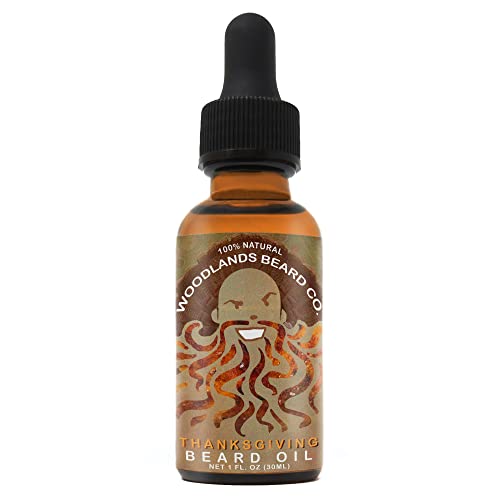
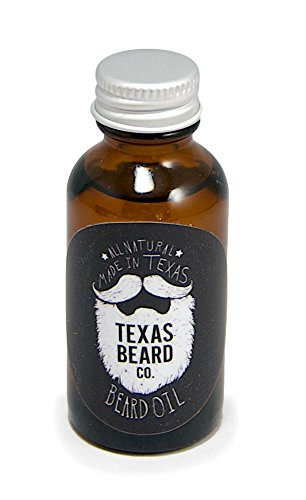
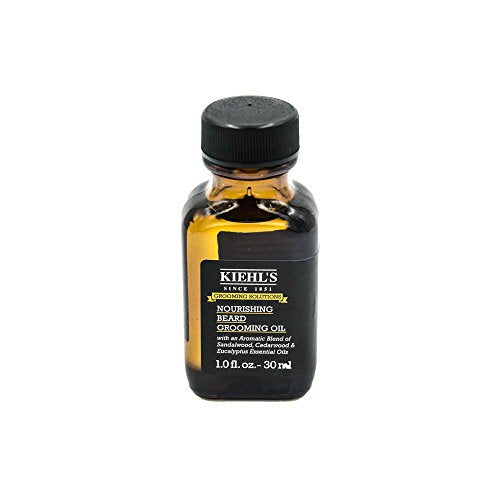
Woodlands Beard Co. Thanksgiving Beard Oil - Nourishing Jojoba & Almond, Spiced Aroma - 1oz


Anise
High RiskAnise, derived from the Pimpinella anisum plant, is commonly used for its aromatic properties in food, beverages, and cosmetic formulations. It acts as a flavoring agent and has potential uses in formulations requiring antifungal or antimicrobial effects due to its natural compounds.
Sustai Insights
Anise offers functional benefits as a flavoring agent and may possess antimicrobial properties. However, it has a high potential for allergies and immunotoxicity, with concerns about its irritant effects. While it is not classified as a carcinogen or reproductive toxin, its environmental impact requires caution due to potential pollution risks. Regulatory agencies do not currently restrict its use significantly, but the overall risk assessment indicates a high risk level based on the current scientific consensus. Users should exercise care and consider alternatives such as fennel or star anise for similar benefits.
Eugenia Caryophyllus (Clove) Oil
High RiskEugenia caryophyllus (clove) oil is an essential oil derived from the flower buds of the clove tree. It is primarily used for its aromatic properties and as a flavoring agent in food and beverages. Additionally, it is utilized for its potential therapeutic benefits in various cosmetic and medicinal applications.
Sustai Insights
Clove oil offers functional benefits, including antimicrobial properties and flavor enhancement, with some sustainability credentials due to its natural sourcing. However, it has a high allergenic potential and poses risks of skin irritation. Regulatory agencies advise caution in use due to these health risks. Clove oil is restricted in certain formulations, leading to an overall high-risk assessment. Safe usage practices are essential, and alternatives such as cinnamon or other essential oils may be considered.
Salvia Officinalis (Sage) Oil
Medium RiskSalvia officinalis (sage) oil is an essential oil derived from the leaves of the sage plant. It is commonly used in cosmetic formulations for its aromatic properties and potential skin benefits. The oil is characterized by its distinctive scent and is utilized in various personal care products.
Sustai Insights
Sage oil offers functional benefits, including antimicrobial properties and potential skin soothing effects, and is often sustainably sourced. However, it presents moderate allergenic risks and low concerns regarding carcinogenicity and reproductive toxicity. Environmental risks include potential bioaccumulation. Regulatory bodies do not currently impose significant restrictions on its use. Overall, the risk level associated with sage oil is medium, highlighting the need for cautious use, especially among sensitive populations. Alternatives may include other essential oils with similar properties but lower allergenic potential.
Thymus Vulgaris (Common Thyme) Oil
Low RiskThymus vulgaris (thyme) oil is a volatile oil extracted from the leaves and flowers of the thyme plant. It is commonly used in cosmetic and personal care products for its aromatic properties and potential antimicrobial effects.
Sustai Insights
Thyme oil offers functional benefits, including antimicrobial properties and use as a natural fragrance in products. It is sustainably sourced and biodegradable. Health risks are minimal, with low concerns regarding carcinogenicity, allergies, and reproductive toxicity. Environmental risks are also low, with no significant pollutants or bioaccumulation. Regulatory bodies do not impose major restrictions, indicating its safety profile. Overall, the risk level is low, making thyme oil a favorable ingredient choice.
Spruce Oil
Low RiskSpruce oil is an essential oil derived from the needles and branches of spruce trees. It is primarily used for its aromatic properties in personal care products, as well as in aromatherapy for its calming effects. Its applications extend to household products and natural cleaning agents due to its pleasant scent.
Sustai Insights
Spruce oil offers functional benefits such as providing a refreshing fragrance and potential antimicrobial properties, making it a popular choice in personal care formulations. It is generally recognized as safe with low risks for cancer, allergies, and reproductive toxicity. However, as with any essential oil, there may be potential irritants for sensitive individuals. Environmental risks are minimal, and it is not known to bioaccumulate. Spruce oil is compliant with regulatory standards, posing an overall low risk when used appropriately. Alternative essential oils with similar properties include pine or cedarwood oil.
Monarda Didyma Oil
Low RiskMonarda didyma oil is a volatile oil obtained from the leaves of the Monarda didyma plant, commonly known as bee balm. This essential oil is often utilized for its aromatic properties and potential applications in personal care and therapeutic products.
Sustai Insights
Monarda didyma oil serves as a natural fragrance and may possess antimicrobial properties, making it beneficial in cosmetic formulations. It is sustainably sourced and generally regarded as safe, with low concerns for cancer, allergies, or reproductive toxicity. Environmental risk is minimal, as it does not bioaccumulate or contribute significantly to pollution. Regulatory assessments show no current restrictions. Safe usage practices include patch testing to avoid irritation. Overall, the ingredient presents a low-risk profile with no major health or environmental concerns.
Simmondsia Chinensis (Jojoba)
Low RiskSimmondsia chinensis, commonly known as jojoba, is an oil derived from the seeds of the jojoba plant. It is commonly used in cosmetic formulations for its moisturizing properties, acting as an emollient and skin conditioning agent.
Sustai Insights
Jojoba oil offers functional benefits such as effective skin moisturization and is biodegradable, with sustainable sourcing practices. Health risks are low, with minimal concerns regarding carcinogenicity, allergies, and reproductive toxicity. Environmental impact is negligible, with no pollutant or bioaccumulation potential. Regulatory status is favorable with no significant restrictions noted. Overall, it is assessed as low risk, and safe usage practices should be maintained. Alternatives include other plant-derived oils like argan or almond oil, which may provide similar benefits.
Zingiber Officinale (Ginger) Root Oil
Low RiskZingiber officinale (ginger) root oil is obtained from the rhizome of the ginger plant. It is commonly used in various products for its aromatic properties and potential health benefits. The oil contains bioactive compounds that may contribute to its effectiveness in formulations.
Sustai Insights
Zingiber officinale (ginger) root oil serves as a natural fragrance and may provide anti-inflammatory benefits. It is sustainably sourced and considered biodegradable. Health risks are low, with minimal concerns regarding carcinogenicity, allergenicity, or reproductive toxicity. Environmental impact is negligible, and regulatory status is compliant with current guidelines. Overall, the ingredient presents a low risk profile, making it a suitable choice in formulations.
Anise
High RiskAnise, derived from the Pimpinella anisum plant, is commonly used for its aromatic properties in food, beverages, and cosmetic formulations. It acts as a flavoring agent and has potential uses in formulations requiring antifungal or antimicrobial effects due to its natural compounds.
Sustai Insights
Anise offers functional benefits as a flavoring agent and may possess antimicrobial properties. However, it has a high potential for allergies and immunotoxicity, with concerns about its irritant effects. While it is not classified as a carcinogen or reproductive toxin, its environmental impact requires caution due to potential pollution risks. Regulatory agencies do not currently restrict its use significantly, but the overall risk assessment indicates a high risk level based on the current scientific consensus. Users should exercise care and consider alternatives such as fennel or star anise for similar benefits.
Thymus Vulgaris (Common Thyme) Oil
Low RiskThymus vulgaris (thyme) oil is a volatile oil extracted from the leaves and flowers of the thyme plant. It is commonly used in cosmetic and personal care products for its aromatic properties and potential antimicrobial effects.
Sustai Insights
Thyme oil offers functional benefits, including antimicrobial properties and use as a natural fragrance in products. It is sustainably sourced and biodegradable. Health risks are minimal, with low concerns regarding carcinogenicity, allergies, and reproductive toxicity. Environmental risks are also low, with no significant pollutants or bioaccumulation. Regulatory bodies do not impose major restrictions, indicating its safety profile. Overall, the risk level is low, making thyme oil a favorable ingredient choice.
Spruce Oil
Low RiskSpruce oil is an essential oil derived from the needles and branches of spruce trees. It is primarily used for its aromatic properties in personal care products, as well as in aromatherapy for its calming effects. Its applications extend to household products and natural cleaning agents due to its pleasant scent.
Sustai Insights
Spruce oil offers functional benefits such as providing a refreshing fragrance and potential antimicrobial properties, making it a popular choice in personal care formulations. It is generally recognized as safe with low risks for cancer, allergies, and reproductive toxicity. However, as with any essential oil, there may be potential irritants for sensitive individuals. Environmental risks are minimal, and it is not known to bioaccumulate. Spruce oil is compliant with regulatory standards, posing an overall low risk when used appropriately. Alternative essential oils with similar properties include pine or cedarwood oil.
Monarda Didyma Oil
Low RiskMonarda didyma oil is a volatile oil obtained from the leaves of the Monarda didyma plant, commonly known as bee balm. This essential oil is often utilized for its aromatic properties and potential applications in personal care and therapeutic products.
Sustai Insights
Monarda didyma oil serves as a natural fragrance and may possess antimicrobial properties, making it beneficial in cosmetic formulations. It is sustainably sourced and generally regarded as safe, with low concerns for cancer, allergies, or reproductive toxicity. Environmental risk is minimal, as it does not bioaccumulate or contribute significantly to pollution. Regulatory assessments show no current restrictions. Safe usage practices include patch testing to avoid irritation. Overall, the ingredient presents a low-risk profile with no major health or environmental concerns.
Simmondsia Chinensis (Jojoba)
Low RiskSimmondsia chinensis, commonly known as jojoba, is an oil derived from the seeds of the jojoba plant. It is commonly used in cosmetic formulations for its moisturizing properties, acting as an emollient and skin conditioning agent.
Sustai Insights
Jojoba oil offers functional benefits such as effective skin moisturization and is biodegradable, with sustainable sourcing practices. Health risks are low, with minimal concerns regarding carcinogenicity, allergies, and reproductive toxicity. Environmental impact is negligible, with no pollutant or bioaccumulation potential. Regulatory status is favorable with no significant restrictions noted. Overall, it is assessed as low risk, and safe usage practices should be maintained. Alternatives include other plant-derived oils like argan or almond oil, which may provide similar benefits.
Salvia Officinalis (Sage) Oil
Medium RiskSalvia officinalis (sage) oil is an essential oil derived from the leaves of the sage plant. It is commonly used in cosmetic formulations for its aromatic properties and potential skin benefits. The oil is characterized by its distinctive scent and is utilized in various personal care products.
Sustai Insights
Sage oil offers functional benefits, including antimicrobial properties and potential skin soothing effects, and is often sustainably sourced. However, it presents moderate allergenic risks and low concerns regarding carcinogenicity and reproductive toxicity. Environmental risks include potential bioaccumulation. Regulatory bodies do not currently impose significant restrictions on its use. Overall, the risk level associated with sage oil is medium, highlighting the need for cautious use, especially among sensitive populations. Alternatives may include other essential oils with similar properties but lower allergenic potential.
Eugenia Caryophyllus (Clove) Oil
High RiskEugenia caryophyllus (clove) oil is an essential oil derived from the flower buds of the clove tree. It is primarily used for its aromatic properties and as a flavoring agent in food and beverages. Additionally, it is utilized for its potential therapeutic benefits in various cosmetic and medicinal applications.
Sustai Insights
Clove oil offers functional benefits, including antimicrobial properties and flavor enhancement, with some sustainability credentials due to its natural sourcing. However, it has a high allergenic potential and poses risks of skin irritation. Regulatory agencies advise caution in use due to these health risks. Clove oil is restricted in certain formulations, leading to an overall high-risk assessment. Safe usage practices are essential, and alternatives such as cinnamon or other essential oils may be considered.
Zingiber Officinale (Ginger) Root Oil
Low RiskZingiber officinale (ginger) root oil is obtained from the rhizome of the ginger plant. It is commonly used in various products for its aromatic properties and potential health benefits. The oil contains bioactive compounds that may contribute to its effectiveness in formulations.
Sustai Insights
Zingiber officinale (ginger) root oil serves as a natural fragrance and may provide anti-inflammatory benefits. It is sustainably sourced and considered biodegradable. Health risks are low, with minimal concerns regarding carcinogenicity, allergenicity, or reproductive toxicity. Environmental impact is negligible, and regulatory status is compliant with current guidelines. Overall, the ingredient presents a low risk profile, making it a suitable choice in formulations.
Experience the essence of the season with Woodlands Beard Co. Thanksgiving Beard Oil. Crafted in the USA, this premium blend combines nourishing jojoba and sweet almond oils with an aromatic mix of ginger, bergamot, orange, clove, anise, vanilla, spruce, thyme, rosemary, and sage. Ideal for anyone seeking a soft, healthy beard with a festive touch, this oil is both a grooming essential and a delightful sensory experience.
- Nourishment and Hydration: Jojoba and almond oils condition and hydrate, promoting softer, healthier beard growth.
- Aromatic Experience: A unique blend of essential oils offers a warm, Thanksgiving-inspired scent that elevates your grooming routine.
- 100% Natural Ingredients: Made from undiluted, premium quality oils, ensuring a pure and effective product.
- Easy Application: Designed for daily use, this oil easily integrates into your grooming routine for optimal beard care.
- Supports Local Craftsmanship: Proudly made in the USA, supporting ethical practices and community impact in every drop.
Subscribe & Save with Sustai
- Best Price Guarantee: Always enjoy the lowest prices on sustainable home essentials.
- No Surprises: We’ll notify you before shipping. No hidden fees, ever.
- You’re in Charge: Change, pause, or cancel your subscription anytime with ease.
- Eco-Friendly Deliveries: Our grouped shipments mean less packaging and lower emissions.
Join us on a sustainable journey. Special offers for a limited time! Prices and promotions may change.
Recommended Products
Experience the essence of the season with Woodlands Beard Co. Thanksgiving Beard Oil. Crafted in the USA, this premium blend combines nourishing jojoba and sweet almond oils with an aromatic mix of ginger, bergamot, orange, clove, anise, vanilla, spruce, thyme, rosemary, and sage. Ideal for anyone seeking a soft, healthy beard with a festive touch, this oil is both a grooming essential and a delightful sensory experience.
- Nourishment and Hydration: Jojoba and almond oils condition and hydrate, promoting softer, healthier beard growth.
- Aromatic Experience: A unique blend of essential oils offers a warm, Thanksgiving-inspired scent that elevates your grooming routine.
- 100% Natural Ingredients: Made from undiluted, premium quality oils, ensuring a pure and effective product.
- Easy Application: Designed for daily use, this oil easily integrates into your grooming routine for optimal beard care.
- Supports Local Craftsmanship: Proudly made in the USA, supporting ethical practices and community impact in every drop.

You can have at most 2 Sustainable Steals products in your cart
Customer Reviews
Customers’ View
Customers generally appreciate the nourishing qualities of Kiehl's Beard Oil, noting its effectiveness in softening facial hair and hydrating the skin underneath. The lightweight formula receives positive feedback for its ability to tame and smooth beard texture without feeling greasy. Many users also highlight the invigorating scent, which combines fresh sandalwood and cedarwood, contributing to a refreshing grooming experience. The inclusion of natural oils, such as jojoba and almond oil, aligns well with the preferences of health-conscious consumers seeking safe and effective personal care products. Overall, customers find this beard oil to be a valuable addition to their daily grooming routine, promoting both beard health and skin comfort.
AI-generated from the text of customer reviewsThis product has no reviews yet.




